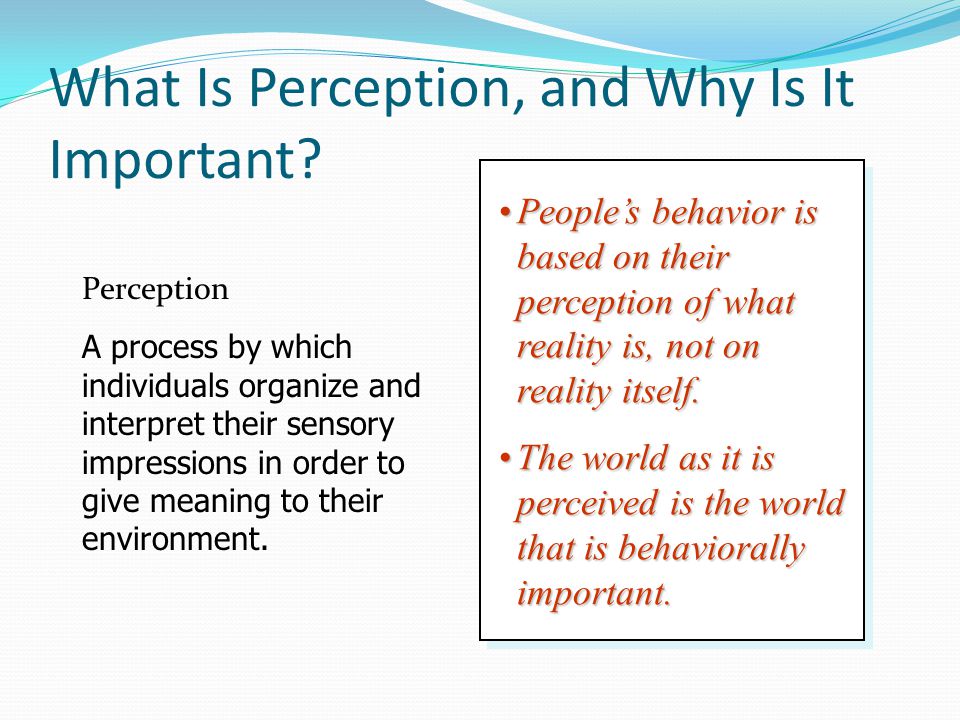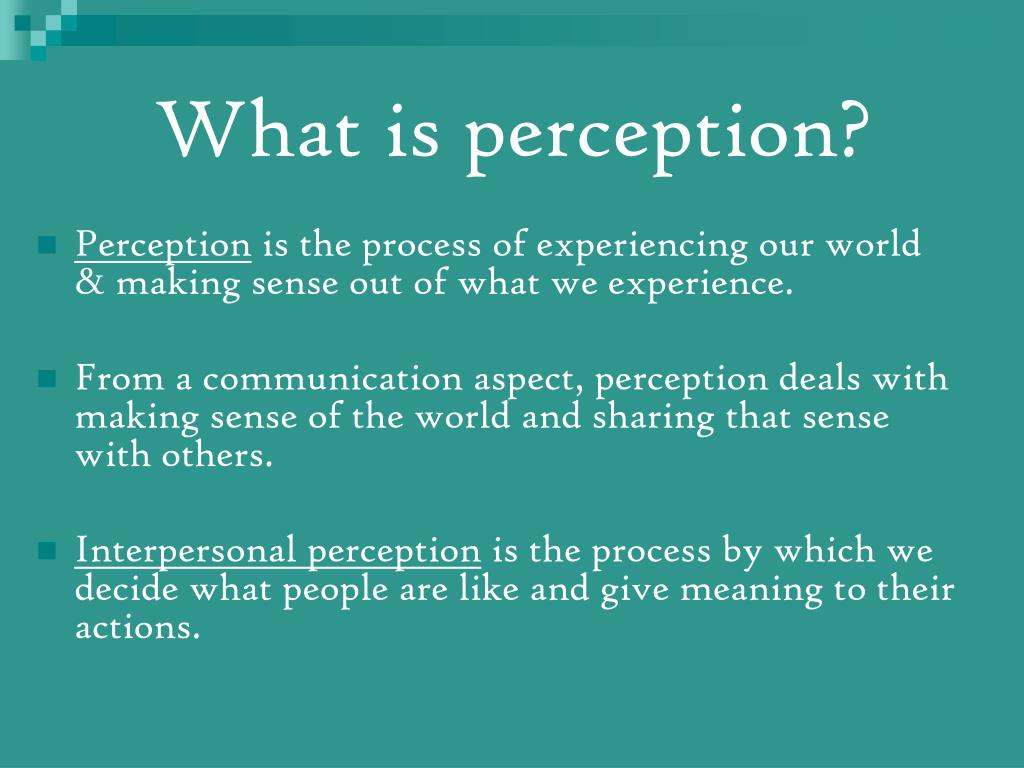An Interesting Aspect Of Our Perception Is That We

The world, as we see it, is not always a faithful representation of reality. Our senses, while seemingly providing a direct window to our surroundings, are constantly being shaped and molded by a complex interplay of past experiences, expectations, and inherent biases. This inherent subjectivity in perception, particularly the phenomenon of predictive processing, has profound implications for everything from how we understand social interactions to the very foundation of scientific inquiry.
At the heart of this lies the realization that an interesting aspect of our perception is that we actively construct it, rather than passively receiving it. We are not blank slates upon which the world imprints itself. Instead, our brains are constantly generating internal models of what we expect to perceive, and then comparing these predictions with the sensory input we actually receive. This process of prediction and error correction shapes our conscious experience.
The Predictive Brain: A Deep Dive
The concept of the "predictive brain" is gaining traction in neuroscience. It suggests that our brains are prediction machines, constantly anticipating what will happen next. This anticipatory process isn't just about simple reflexes; it involves complex cognitive models that incorporate our knowledge of the world.
These models are built on prior experiences and learned associations. When sensory input matches our predictions, it reinforces the model. However, when there's a mismatch – a prediction error – our brain adjusts its model to better anticipate future events.
How Predictive Processing Works
Imagine walking into a familiar coffee shop. You expect to smell coffee, see pastries, and hear the murmur of conversation. Your brain has already prepared a predictive model of this environment. When you encounter these expected stimuli, your brain's activity remains relatively stable.
However, if you walked into the same coffee shop and found it completely silent and empty, that's a significant prediction error. Your brain would then dedicate more resources to processing this unexpected information, attempting to update its model of the coffee shop.
This process happens constantly and unconsciously. It is the very foundation of how we perceive and interact with the world.
Implications for Everyday Life
The implications of predictive processing extend far beyond the laboratory. This framework helps explain a range of cognitive phenomena, from visual illusions to social biases.
For example, consider confirmation bias. We tend to seek out information that confirms our existing beliefs and ignore information that contradicts them. This can be understood as a form of predictive processing, where we are more likely to attend to and remember information that aligns with our internal models.
Furthermore, predictive processing can shed light on mental health conditions. For example, individuals with anxiety disorders may have heightened sensitivity to prediction errors, leading to increased vigilance and worry.
Social Perception and Prejudice
Our social interactions are also heavily influenced by predictive processing. We form expectations about how people will behave based on their appearance, their background, and our past experiences.
These expectations can lead to biases and prejudices. If we expect someone from a particular group to behave in a certain way, we may be more likely to interpret their actions in a way that confirms our expectations, even if the evidence is ambiguous.
"Understanding how predictive processing shapes our social perception is crucial for addressing issues of discrimination and inequality," says Dr. Anya Sharma, a cognitive psychologist at the University of California, Berkeley.
Breaking down these biases requires conscious effort to challenge our own predictions and be open to alternative interpretations.
Challenges and Future Directions
While the predictive brain framework is promising, it also faces challenges. Researchers are still working to understand the precise neural mechanisms underlying predictive processing.
One key area of research is the role of Bayesian inference in predictive processing. Bayesian inference is a statistical method for updating beliefs based on new evidence. Some researchers believe that the brain uses Bayesian principles to weigh prior expectations against sensory input.
Another challenge is to develop more sophisticated models of predictive processing that can account for the complexity of human cognition. This requires integrating insights from neuroscience, psychology, and computer science.
The Quest for Artificial Intelligence
The principles of predictive processing are also informing the development of artificial intelligence (AI). AI researchers are exploring how to build systems that can learn and adapt in a similar way to the human brain.
By incorporating predictive models into AI algorithms, researchers hope to create systems that are more robust, efficient, and adaptable. This could have significant implications for a wide range of applications, from robotics to medical diagnosis.
The development of AI that mimics human cognitive processes hinges on a thorough understanding of predictive processing.
Conclusion: A New Perspective on Reality
The realization that our perception is actively constructed, not passively received, is a profound shift in our understanding of the human mind. It underscores the importance of self-awareness and critical thinking.
By understanding how our brains generate predictions and correct errors, we can become more aware of our own biases and limitations. We can learn to challenge our assumptions and be more open to different perspectives.
Ultimately, understanding the predictive nature of perception can empower us to create a more accurate, compassionate, and nuanced understanding of ourselves and the world around us. This ongoing research promises to reshape our understanding of consciousness, cognition, and the very nature of reality.




+Once+our+senses+are+activated%2C+we+begin+to+process+them..jpg)













